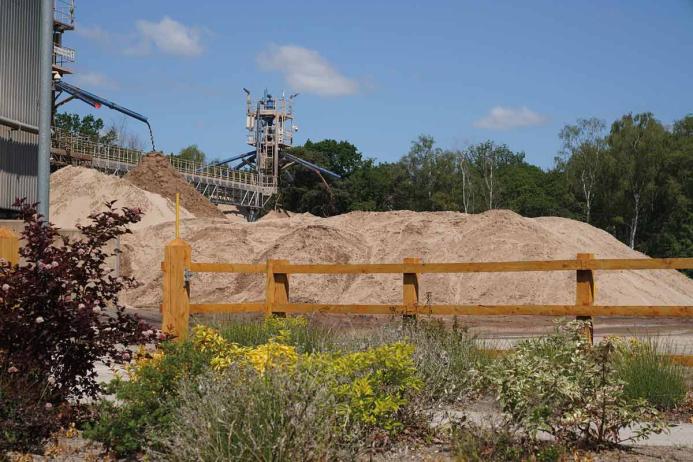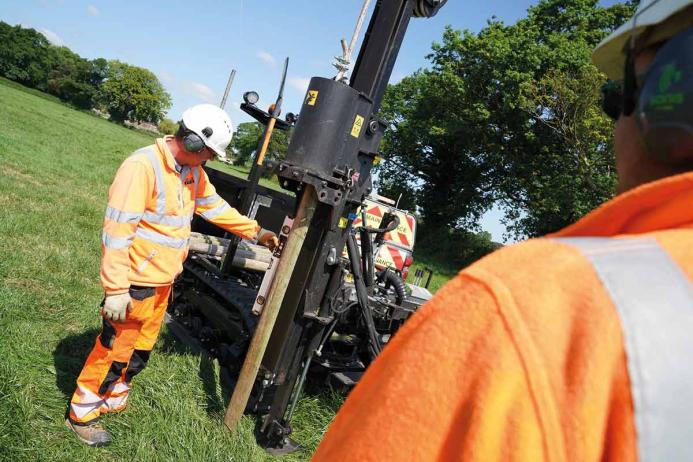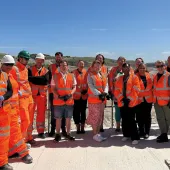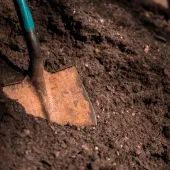IQ unveils updated ‘Landscape and Visual Considerations’ guidance

Being a good neighbour has long been a priority for quarry operators, ensuring that the day-to-day site operations have minimal impact on local residents and other businesses. In being good neighbours, operators often find that their sites benefit from improved operational and environmental performance.
Where sites are located in the wider landscape means that this consideration is extended to everyone who may be impacted by the quarry operations. Not just local residents, but anyone who uses an area for leisure or even if just travelling through.
Managing the visual impact of how a site operation fits within its location was just one topic that featured in the Institute of Quarrying’s comprehensive textbook, ‘Environmental Management’. Previously published in 2007, IQ is now launching each topic as its own guide to be published individually as part of an Environmental Management series.
Sarah Fry, IQ’s head of membership and marketing, says: ‘The original IQ Environmental Management textbook was ahead of its time in providing guidance to anyone working in the quarrying and mineral products sector about managing site operations sustainably. Environmental management has become an area with such a diverse range of topics that is rapidly evolving so breaking it down into smaller topics will help us keep the guidance relevant and up to date for members.’

The first of these stand-alone guides to be published is ‘Landscape and Visual Considerations’. This newly updated guide provides an overview of the impact of quarrying on the landscape and visual surroundings, as well as the associated assessment and mitigation strategies that can be utilized. It explains the planning policy context, landscape and visual impact assessment, and the evolving and cumulative effects of quarrying operations.
The guide shows how unique geological, climatic, and human-influenced features affect the landscape and how these are identified at local, national, and international levels, for example as Areas of Outstanding Natural Beauty and UNESCO World Heritage Sites. It also explores the potential landscape and visual impacts of different types of quarrying operations, including hard rock quarries, slate landscapes, and sand and gravel quarries.

Author of the guide, Simon Higson CMLI MIQ, director at Felstone Consulting Ltd, says: ‘The updated guide aims to provide an aide-memoir about how negative impacts can be mitigated and where possible, potential effects can be positive. This includes examples of site layout, screening and storage bunds, planting design, treatments of built elements, and good housekeeping more generally.’
The guidance serves as a valuable resource for anyone working in or studying quarrying, construction materials and the related mineral products and processing industries, and describes the policy and technical background to landscape and visual assessment and how such considerations should be included within quarry planning and design.

Aligning with standards and policies at Sibelco
Environmental and social responsibility is central to Sibelco’s vision, strategy, and day-to-day business operations. Through proactive management, they seek to ensure that the impact of their operations provides a beneficial outcome for all their stakeholders.
In the UK, Sibelco have 14 sites where fencing and barriers are regularly reviewed for maintenance and repair. Rather than taking a ‘one-size-fits-all approach’ of using the same fencing across their estate, the team at Sibelco developed a handy flowchart tool to help determine which type of fencing would be most suitable for each site.
The benefit of this approach is that each site can be assessed according to its own unique landscape requirements, whilst maintaining a standardized approach that met the requirements under regulation 16 of the Quarries Regulations 1999 and followed the Quarries National Joint Advisory Committee’s (QNJAC) guidance on the provision of boundary or perimeter barriers at quarries.
The flowchart takes the user through a series of considerations about the location of the fencing and who is likely to be impacted by it, with a risk rating applied. Any mitigations that can be put in place are documented as part of the straightforward planning tool. Once the overall risk rating has been determined, that guides the type of fencing to be deployed.
Key to the success of this approach has been the relationship with Sibelco’s fencing contractor, Stockdale Fencing. In embedding the fencing requirements risk assessment tool into the decision-making process, it helps Stockdale Fencing understand what fencing is required, especially when there are tricky locations. Recently they were called upon to install 4,000m of fencing at a location where there was a working farm alongside the boundary edge of the site. The flowchart was intuitive enough to consider the needs of the grazing sheep and the milking needs of the cows in the adjacent field.
Adam Daniels FIQ, vice-president of operations North Europe at Sibelco, says: ‘In developing this risk-based flowchart tool to support our decision-making around fencing and barriers, we have found that we can improve the visual impact of our sites for residents and others in and around our site locations. We have a standard approach which means we are meeting our obligations and putting fencing in place that is appropriate for each site. That is a better outcome for everyone.’
IQ members can claim a free online copy of the Landscape and Visual Considerations guide by going to: www.quarrying.org/landscapes-chapter.
Printed copies are available to purchase at: shopatiq.org/products/landscapes-and-visual-considerations.
Subscribe to Quarry Management, the monthly journal for the mineral products industry, to read articles before they appear on Agg-Net.com








